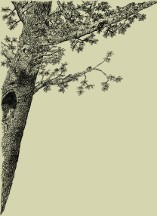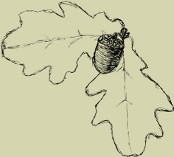42 41 40 39 38 37 36 35 34 33 32 31 30 29 28 27 26 25 24 23 22 21 20 19 18 17 16 15 14 13 12 11 10 9 8 7 6 5 4 3 2 1
Issue 39 (2008)
The paper presents the analysis of the chemical composition of Scots pine wood subjected to thermal modification at the temperature 190°C and 220°C. The process was conducted in the atmosphere of nitrogen for each of the above temperatures for the period of 6, 18 and 28 hours. Investigations of the chemical composition comprised the determination of wood basic constituents: lignin, holocellulose and pentosans. In addition, quantities of substances soluble in 1% NaOH, 2% HCl and organic solvents were determined.
Key words: wood, holocellulose, lignin, soluble substances
The article reveals the results of the research conducted on colour light fastness of paper pulp. The research involved the use of bleached softwood and hardwood chemical pulps, bleached chemithermomechanical pulp – not dyed and dyed with blue cationic direct dye. The question of colour change is discussed.
Key words: softwood chemical pulp, hardwood chemical pulp, chemithermomechanical pulp, colour, dyeing, cationic direct dye
This paper presents results of measurements of radial gradients of density and wood elasticity modulus determined in the tensile test for microtome samples obtained from early- and latewood in annual growth rings of pine trees dominant in the tree stand. On the basis of the results, the elasticity modulus of cell walls has been determined and then analysed as a function of the microfibril angle in tangent tracheid walls.
Key words: wood density, call wall, microfibril angle
Three pine trunks and three spruce trunks and a lime icon support were tested with application of two radiation methods with the 241Am isotope: the absorption method and the backscatter method, i.e., the method based on the Compton phenomenon with the gamma radiation backscattering. The outcome was as follows: compliance of the radiation measurement as compared against the classic stereometry method, and no impact of the anatomic direction and the wood moisture content on this compliance of results obtained by different methods. The radiation method is useful for detecting differences in density for wood with insects damages, fungi infection or internal fissures.
Key words: radiation, gamma-defectoscopy, Am-241 isotope, density, pine/spruce wood, lime icon support
The mathematical model of log sawing with a fixed angle to the log axis attaining a desired wood was developed. The research revealed that the change of sawing angle relative to axis produced unique pattern of wood texture. The results of theoretical simulation were confirmed by experimental researches and similar character of sawing angle influence on wood texture was revealed in both types of investigations. The database of wood textures of logs sawn with the breakdown method (in parallel with the log axis, in parallel with the log generatrix, with angles of 5-15° to log axis) was created and furniture design alternatives were proposed.
Key words: wood texture, sawing angle, log, lumber
Three composite I-beams of an effective span of 4.5 m and depth of 240 mm made of 38 × 63 mm pine wood flanges and 10 mm thick OSB/3 webs were tested in bending. Each beam was loaded at third point in two cycles: six times up to 6.65 kN and six times up to 10.34 kN to produce mean normal stress in wood flanges at the level of 88% and 137% of the computational tensile strength, respectively. The total deflection at the mid-span of the beam and the deflection at the zone of pure bending were measured with the aid of the depth and dial gauges. Additionally, strains at the wood flanges and the OSB webs were measured with the aid of resistance strain gauges situated in the middle part of the beam. After completing both load cycles each beam was loaded up to failure.
Key words: composite I-beams, oriented strand board (OSB), pine wood, strength, rigidity, flexibility, failure, load capacity
The sorption isotherms of mature and juvenile lime wood were determined for the successive phases of the process. The Hailwood-Horrobin model was used to examine and explain changes in the equilibrium moisture content. The reduction of the dissolved water content was found. The accessibility of water vapour to the sorption sites as well as the hydrated water content was practically the same for mature and juvenile wood. The Fiber Saturation Point was determined with the method of the extrapolation of sorption isotherms. The diversified values of the Fiber Saturation Point were found for juvenile wood as compared to mature wood. The influence of sorption phases on values of the Fiber Saturation Point was determined. The hysteresis of the sorption was quantified.
Key words: equilibrium moisture content, sorption isotherm, Hailwood-Horrobin model
The tensile drying stress development of steamed and unsteamed wood was analysed in order to determine the influence of the treatment on check risk of the wood during the initial phase of the kiln drying. The tests were performed using a load cell for total mechanically restraint shrinkage of dried samples. The reliability theory was used to describe difference of the failure rate of steamed and unsteamed wood. The results of the investigations showed that the wood steaming causes check which occurred under lower tensile desorption stress. The analysis of the results of the experiments proved that drying of steamed beech wood is accompanied by the significantly higher risk of checking as compared to unsteamed wood.
Key words: restraint shrinkage, Weibull failure distribution, thermal treatment















 Download PDF
Download PDF